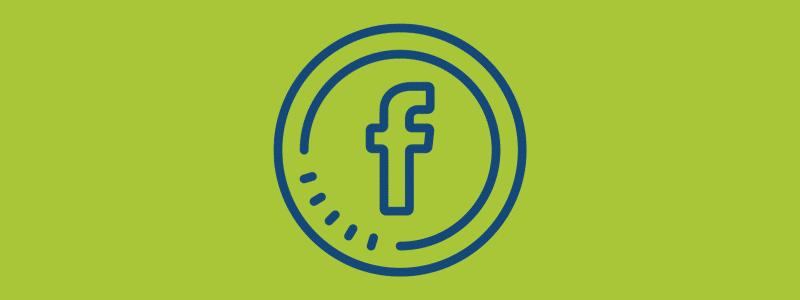With the rise in popularity of social media, it’s no surprise that advertising options for social media channels are in higher demand than ever as a means of customer acquisition. Business owners who can think strategically about Facebook ads management can gain an upper hand in crowded markets. But how do you know where to start in the complex world of social ad management?
In this complete guide to Facebook ads management, we’ll start with the basics and help you understand Facebook ads best practices. We’re here to remove some of the stress and intimidation that many people feel when they first encounter Facebook advertising.
In this blog, we’ll look at the following:
- Facebook Ads as a Customer Acquisition Strategy
- Understanding Facebook Ads Management – Terms & Application
- Run High-Converting Facebook Ads for Your Business
- Are Facebook Ads Worth the Investment?
Facebook Ads as a Customer Acquisition Strategy
Facebook ads are a primary tactic in many companies’ customer acquisition strategy. Because Facebook already has such an active user base, placing ads on this platform makes a lot of sense. Facebook also gives you the ability to easily target a niche market by narrowing in on key demographic factors, as well as interests and purchasing behavior. Then when you factor in the ability to also run ads on Instagram and across Facebook’s partner network, you can really expand your reach.
However, skillful Facebook ad management doesn’t happen overnight. In fact, optimization often requires trial and error, budget and copy experiments, and even troubleshooting. Yet when these pieces come together, many business owners attest that Facebook ads have the power to unlock a long list of new and excited customers.
Benefits of Using Facebook Ads to Acquire New Customers
Before you start including Facebook ads as part of your customer acquisition strategy, you may be wondering how to make money on Facebook ads and the benefits of this tactic. This bottom line plays an important role in decision-making, planning, and your budget.
Below are some of the primary benefits of using Facebook to acquire new customers:
- You can deliver relevant ads throughout the buyer journey.
- You can easily calculate the cost per customer acquisition.
- You can quickly troubleshoot, improve, and make changes to your strategy.
Understanding Facebook Ads Management – Terms & Application

Now that you’ve learned why businesses turn to Facebook to acquire new customers, it’s time to explore the ins and outs of how a Facebook advertising campaign works.
In each of the sections below, you’ll get a better look at the components of Facebook ad management. These components range from industry standards to fundamental components to technical tips.
Using Facebook Ads for Ecommerce
E-commerce websites and companies can use Facebook ads to keep up in an increasingly competitive market. Because Facebook presents ad images and copy to potential customers while they’re actively engaged, it’s the perfect outlet for capturing interest. Tips for e-commerce business ads include:
- Using powerful and eye-catching images
- Making use of the interest field in Ad Manager to showcase specific products
- Creating custom audiences for customers who have viewed your product before
- Targeting shopping cart abandonment
Because 98% of visitors don’t purchase on a first visit, Facebook can offer a way to follow through and re-engage with interested customers.
Facebook Audience Targeting
Defining your target audience is one of the major benefits of using Facebook for advertising. Facebook offers the ability to get incredibly granular with demographic information like age, gender, location, and more. When you select targeting information, the Facebook ad manager will also display your estimated daily reach.
Audience Reach
Facebook uses a unique algorithm for determining the daily reach of your target audience on the platform. The potential reach number is an estimation of how many people Facebook expects to potentially see your ad, although it is never a guarantee for exact ad views.
By using Facebook’s Reach Objective, you can maximize your potential numbers. Since reach correlates directly to audience targeting, it’s important to have specific ideal customer personas in mind as you look to expand your reach.
Types of Facebook Ads
When you research Facebook ad examples, you’ll likely find many types of ads. This is because Facebook gives users flexibility and creativity when it comes to ad design. Different types of ads include:
- Video and photo ads – standard video and photo images alongside copy
- Slideshow ads – similar to video ads but in presentation style, with narration or motion
- Carousel ads – ads that use several images and allow users to click through
- Dynamic product ads – an ad template that uses images from your data feed
- Lead conversion ads – ads that take users to a form or landing page
Setting Your Ad Budget
Facebook requires that you spend at least $1 per day on advertising costs, but you can set exact numbers for the life of an individual ad or campaign. Within the ad manager, make sure to set a Total Budget and a separate Daily Budget. These numbers tell Facebook when to stop running the ads as you hit your maximum spend.
Budgeting on Facebook is unique and personal. It largely depends on how much you expect to gain from each newly acquired customer or purchase. Additionally, you should carefully monitor your ad budget as you hit the limit on how many people you can truly reach with the same ad.
Using Facebook Business Manager
Facebook Business Manager is the primary hub for conducting business on Facebook. Once you establish your account, you can create and track crucial business activities such as:
- Ad management
- Asset management on Pages and business accounts
- Providing account access to other team members or marketing partners
Business Manager is also helpful for working with consultants or different team members who need to have varying degrees of access. The Business Manager platform also allows you to separate your personal and professional profiles on Facebook, which is especially important when an employee leaves or an agency relationship ends.
Utilizing Google Ads and Analytics
Many marketers wonder about Google ads versus Facebook ads. According to WordStream, an online advertising service provider, the main difference is this: Google helps you find new customers, and Facebook helps new customers find you.
Google AdWords is a paid search feature, while Facebook is a paid social platform. These two can often work separately or in combination to drive big results for marketing teams. While Google has an expansive reach, Facebook can offer targeted control that may be especially beneficial in local markets.
Submitting Facebook Ad Appeals
Occasionally, you’ll have a Facebook ad stuck in review. In even more rare instances, Facebook ads can be rejected by the platform. Although Facebook allows for a great deal of creativity, there are important Advertising Policies that govern the text and imagery you place in your ad.
If your ad is rejected and you believe that it’s in error, you can submit an appeal to have the Facebook team complete another review.
Directing Traffic to Landing Pages
One of the most powerful ways that you can use Facebook for advertising is by creating landing pages. You can use this option to either link to an external landing page (on your own website) or internally within Facebook. Facebook landing pages are helpful in getting your audience to take immediate action in response to an ad.
Landing pages appear in new tabs either on your site or within Facebook. They can provide an easy way for customers to:
- Sign up for more information
- Register for a virtual event
- Submit contact information to receive a special incentive or downloadable
- Get a direct response from a representative
To be most effective, landing pages should drive home the value of the action and remove friction from the signup process.
Move Leads Down Your Sales Funnel
The traditional way to nurture customers on Facebook is through new organic posts. However, to expand the reach of your content, you can utilize a Facebook sales funnel.
A sales funnel on Facebook works by generating awareness of your offer or brand and following up with more solutions as your potential buyer moves through the journey. By organizing your Facebook ad audiences into cold, warm, and hot segments, you can match new ads and budgets based on where people are in the decision process.
Setting Up Your Facebook Pixel
While it might sound complex, the Facebook Pixel is simply code that you place on your website. This code collects data that can help you know more about lead conversion, targeted audience performance, and retargeting efforts. This provides an added layer of information that you can use to improve future ad campaigns or marketing efforts.
Although the Facebook Pixel isn’t required to use ads, using this code can certainly help you better understand your ad performance. For easy installation, you first need to create a new Pixel and add it to your website. You can then set up events to track specific actions that you care about, such as new purchases or email sign-ups.
Managing Your Facebook Business Page
A Facebook Business Page is often the first encounter that many customers will have with your brand or business. According to Facebook, two-thirds of users visit the page of a local business at least once per week. This underscores the importance of treating your Business Page as another way to make a first impression and engage existing customers.
A Business Page is also where you’ll start your advertising journey, and it’s the place that visitors may go after viewing an ad. Because of this, it’s extremely crucial that you optimize and maintain your page so that buyers know how to contact you if they have additional questions.
Increasing Brand Awareness
Facebook is already a powerful way to increase brand awareness organically, but you can also leverage specific tools within ad creation to increase this metric. The Brand Awareness Objective in Ads Manager gives you the ability to show ads to visitors who are more likely to remember them.
This setting is useful if you want to conduct a more in-depth analysis of your target audience. Ad campaigns for the brand awareness objective must meet specific requirements, so be sure to leverage Facebook’s instructional resources before diving in.
Publishing Blog Posts for Reach
A Facebook Business Page is the perfect way to expand your content marketing efforts. You can use a Facebook ad boost to get more eyes on your blog and website content and to increase paid traffic efforts. There are many reasons you might use Facebook ads for blog posts, including:
Many times, using ad campaigns for blog posts is about driving traffic rather than making sales. You may consider adding an email signup form for the latest blog posts to help capture contact information or create a downloadable option to further encourage your ideal customer to engage.
Defining Click-Through Rate
Click-through rate, or CTR, is the percentage of times that people saw your ad and clicked on it. Facebook calculates this metric by dividing link clicks by overall impressions. Knowing your CTR can help you evaluate how actionable your copy is and how accurate your audience targeting is.
Average CTR is often defined by your unique industry. The general average across the board is around 0.90%. Establishing your click-through rate can also help you define your cost per click (CPC), another important metric when it comes to advertising spend.
Video Ads
Video ads for Facebook can be an effective way to engage with your audience. With online video accounting for as much as 50% of online traffic, this medium is an excellent way to branch out beyond standard images.
Facebook offers incredibly detailed reporting for video ads. Using Ad Manager, you can measure things like:
- The number of times your video was played all the way through
- The average cost for 3 seconds worth of video
- The number of watchers who skipped to a certain point
- The average watch time of all views
As with other types of ads, it costs money to maintain a video ad every day. These statistics can help you see which type of video content is the most expensive in terms of ROI. Nevertheless, video ads can be a refreshing way to engage customers with new content.
Adding Calls-to-Action
No matter what type of ad you choose to run, you should always incorporate a call to action. This short, simple phrase gives customers an action step to take after they’ve seen or watched your ad. Facebook also makes it easy to add buttons to different types of ads so that your CTA language stands out.
Calls-to-action let a viewer or customer know the precise next step they should take. Effective phrases include:
- “Apply Now”
- “Download Your Freebie”
- “Shop Now”
- “Sign Up”
- “Learn More”
When it comes to ads, it’s always beneficial to promote a result rather than a specific product. This mindset shift allows customers to see how your solution solves their personal frustration. This is in contrast to selling something directly, which may not perform as well.
Run High-Converting Facebook Ads for Your Business

One common myth is that high-converting Facebook ads are the result of one particular element. While success is often seen holistically, high conversion rates are the result of a combination of different factors. When you consider Facebook ad objectives, it’s crucial that you think about the conversion rate you want to see. High conversion is often the result of the following elements.
Facebook Ad Placement
When you set up a new ad campaign, you can choose where you want the ad to appear on the platform. This includes placements within the main news feed, on the sidebar, in certain places on the mobile app, and across Facebook’s partner network. Being strategic about where you place your ad can impact how many people view it and how they engage.
Facebook Ad Copy
The more Facebook ad campaigns you create, the more you can improve your copy strategies. Marketing expert Neil Patel recommends:
- A short, captivating headline
- Strong value proposition that tells someone why they should click
- Powerful, action-oriented verbiage in your call to action
Facebook Ad Optimization
Ad optimization is when all of the ingredients come together to create the perfect recipe. In reality, this looks like finding the ad placement that works for your audience and writing copy that’s effective enough to convert. It also includes the use of a strong creative element (image or video) to gain attention and stop people in their tracks.
Are Facebook Ads Worth the Investment?
Since social media is a rapidly evolving platform, statistics and data change frequently. While that’s the case, Facebook accounts for over $21.57 billion dollars in ad spend each year, taking up 83% of the market across all channels. Clearly, there is a need for business leaders and marketers to understand how to make this outlet work for them.
When looking at the worth of Facebook ads, one thing is for sure–looking beyond the price of a single campaign matter. Here are two ways to consider whether Facebook ads are worth the investment for your company.
Financial Return on Investment
To calculate financial ROI, you might need to gather a few metrics. In addition to knowing how much you spend per click on Facebook, it’s also helpful to know how much the average customer tends to spend on a product or service.
When you subtract the investment amount from the overall return (such as revenue) and then divide it by the investment amount, you can calculate ROI. This metric can help you know how and when to invest advertising dollars in Facebook, particularly if your prices change seasonally.
Social Return on Investment
When you consider whether Facebook ads are worth it for your particular use, it’s also helpful to factor in the social perspective. You may be able to increase interactions, engagement, followers, and brand awareness, all by using targeted ads.
Although social ROI might not correlate to immediate revenue, it can help you broaden your reach and build brand equity. If these factors are part of your overall business strategy, then Facebook ads may be worth the amount you spend. While it’s critical to keep an eye on budget, these results may also have long-term rewards.
Digital Advertising that Works for You
At Striventa, our team knows how tough it is to be a specialist in every area. Yet we also understand all the tactics that play into an overall customer acquisition strategy. Being able to effectively manage content creation, inbound marketing channels, and Facebook advertising can be time-consuming and costly. That’s why we’ve created our Business Growth Strategy program. We’ll work with your team to successfully execute all the above tactics (and more) to help you acquire more customers and grow your business.

